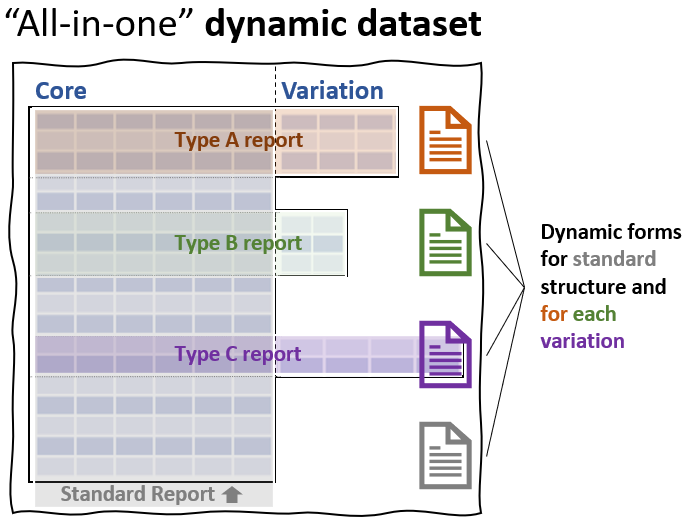Does flexibility rule or do rules rein-in flexibility? Boundaries may be necessary but freedom is the dream.
Technology is founded on rules but is also ruled by the compelling drive to do more, faster and better. Pixel-perfect retina displays have made green-on-black screens an antique, quantum processors will one day take computing power to infinity and beyond.
In the day-to-day world of corporate IT, the quest for flexibility and freedom is exemplified by the uncontrollable proliferation of spreadsheets. No matter how much investment is poured into controlled systems, the William Wallace of personal computing will keep rising.
I, with many many others, wrote more than once about the merits and perils of spreadsheets; in this article, however, I am going to focus on a specific phenomenon:
The multi-version template
A structured template is an embryonic system: it is created and distributed with the intention of getting others to report back information in the same format.
Yet, except when the spreadsheet ninjas understand the art of locking portions of a worksheet, out of <n> templates coming back with data, a good chunk of them will have some additional columns…that are useful to the sender, useless to the rest. Needless to say, each sender’s additions will be different from the additions of others.
This happens for a reason: while, at a central level, only a subset of general information elements are required, at a local level additional details are needed to frame the information within that context.
At some point, if a sufficient quantity of people and data volumes are involved, the structured template will be transformed into a system and those “local columns” will not be supported; hence, those spreadsheets will never go.
Computer says “No”
This simplified scenario illustrates a “computer says NO” situation. There are, nonetheless, objective technical obstacles in modelling and supporting the data capture, storage and reporting of “local versions” of information within a unified system – especially when we are dealing with tens or hundreds rather than a handful of different types of records.
In many software platforms, dynamic forms solve the data capture challenge: any number of pre-configured templates may be presented onto the screen, each with their own variety of attributes, even changing in real-time as people fill them out.
However, Storage and Reporting, and the administration that comes with them in terms of setup and user access, do not come easy if they come at all: 100+ different forms would require 100+ different tables/report formats (unless you chose to store the forms as if they were documents – which is fine if you need to consult them one by one, not if you’d like to report and filter on specific data elements).
The LiveDataset Perspective
In LiveDataset, dynamic datasets provide an end-to-end solution:

Computer says “Yes!”
Leveraging a document-based database back-end, LiveDataset empowers client-side administrators to create dynamic forms, with data dynamically stored in a single dataset and accessible in tabular form, either in “central” mode (the left of the dotted line in the diagram) or in “local” mode (the left and right of the dotted line for each pre-configured type of record).
In line with our philosophy, dynamic datasets offer a compelling alternative to local spreadsheets because they are designed to satisfy both central and local needs.
In real life, this architecture was integral to solving a KYC/AML Case Management use case involving hundreds of business lines needing to streamline their Quality Assurance processes.
If you are into stretching the boundaries of flexibility, DM me on LinkedIn or email dataclinic@livedataset.com for a free, confidential exchange of information.
–
This piece is part of our Digital Fire Drills series.

